 |
 |
 |
| |
COMPARABLE EFFICACY OF IBALIZUMAB
IN COMBINATION WITH ONE OR TWO FULLY ACTIVE AGENTS
|
| |
| |
CROI 2020
Reported by Jules Levin
E. DeJESUS1, C. McGARY2, P. MESQUITA2, S. WEINHEIMER3, Z. COHEN4
1Orlando Immunology Center, Orlando, FL; 2Syneos Health, Somerset, NJ; 3TaiMed Biologics Inc., Irvine, CA; 4Theratechnologies Inc, Montréal, Canada
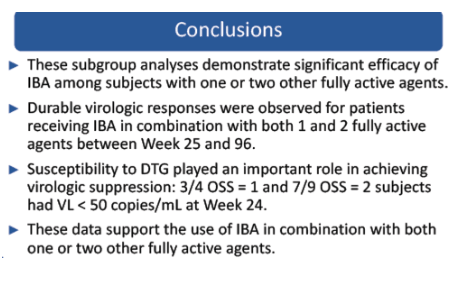
Abstract
Current guidelines recommend a regimen containing at least two, preferably three, fully active agents to suppress viremia in HIV treatment-experienced patients. However, identifying three fully active agents presents a challenge for some multidrug resistant (MDR) HIV patients. Ibalizumab (IBA), a CD4-directed post-attachment HIV-1 inhibitor, is approved for MDR patients failing their ART regimen. We sought to determine if IBA had comparable and durable virologic efficacy in patients with one versus two other fully active agents.
Patients received IBA 2000mg loading dose followed by 800mg doses every 2 weeks up to Week 25 in TMB-301. An optimized background regimen (OBR) with ≥1 additional fully active agent was added 7 days after starting IBA. Following completion of TMB-301, eligible patients continued to receive IBA every 2 weeks under study TMB-311.
In TMB-301, 12 of the 40 patients had one fully active agent paired with IBA (OSS1) and 18 patients had two fully active agents with IBA (OSS2). Baseline median viral load (VL) and CD4 counts were 65,000 and 20,000 copies/mL and 57 and 89 cells/mm3 for the OSS1 and OSS2 patients, respectively. In OSS1 patients, fully active agents in addition to IBA were fostemsavir (n=6), DTG (n=4), TDF (n=1), and RPV (n=1). Of these, 11 (92%) had >0.5log10 VL decrease on IBA functional monotherapy after 7 days. At Week 25, 5 of the 7 OSS1 completers (71%) achieved <50 copies/mL, of which three were on fully active DTG. At Week 96, 5 of 7 OSS1 patients (71%) maintained viral suppression, which continued until they transitioned to commercial supply (some up to Week 124). In OSS2 patients, 13 of 18 (72%) reached a >0.5log10 VL decrease after IBA functional monotherapy. At Week 25, 9 patients (50%) with OSS2 achieved <50 copies/mL, 7 of which were on a fully active DTG regimen, demonstrating similar virologic efficacy when IBA is paired with one or two fully active agents. At Week 96, viral suppression was maintained in 9 patients and they continued on IBA until commercial was available (some up to Week 140).
Subgroup analyses of TMB-301/311 data show significant efficacy of IBA among patients with one or two other fully active agents, with durable responses regardless of the number of active agents. Patients who combined IBA with DTG showed impressive rates of suppression. Data support the long-term efficacy of IBA-based regimens that include two or three fully active agents.
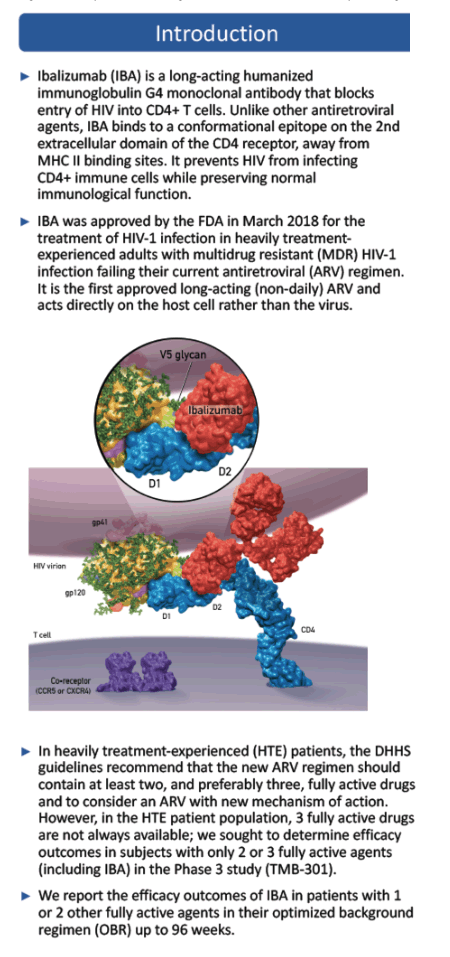
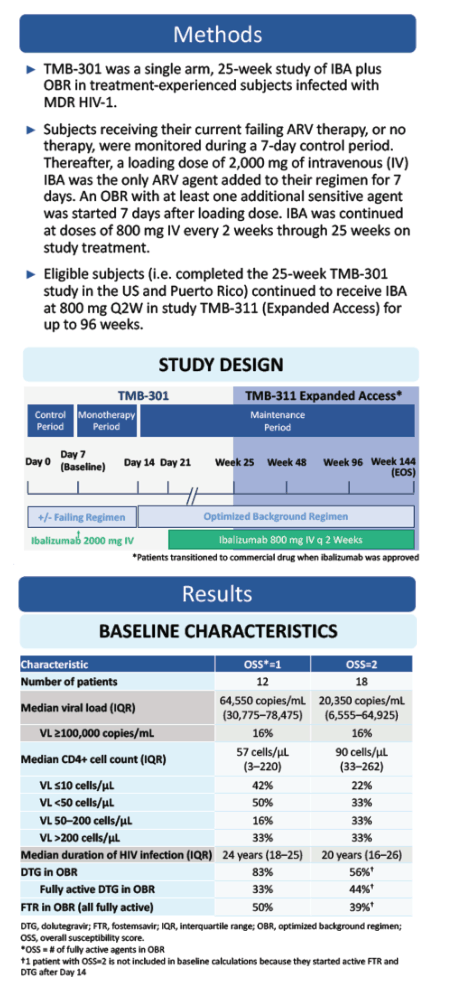
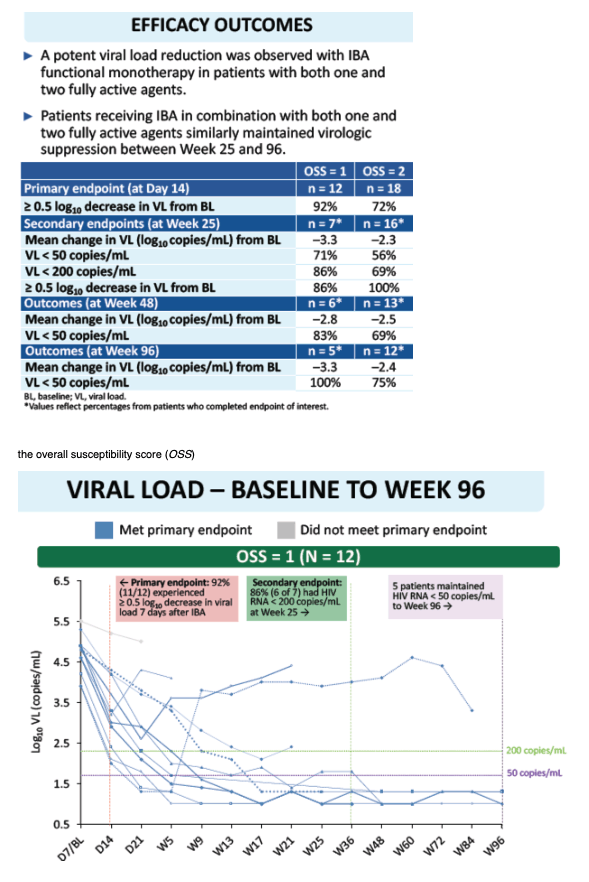
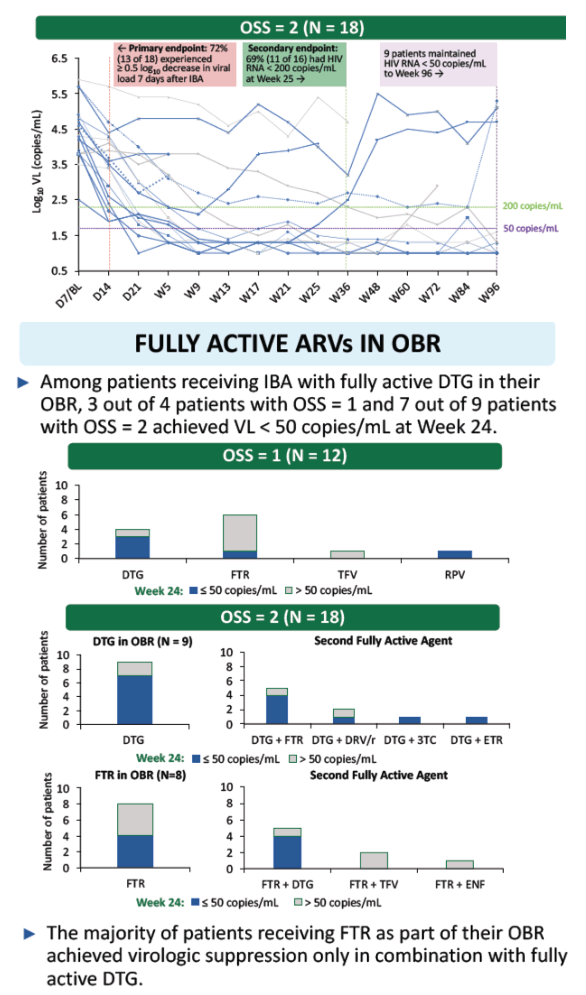

|
| |
|
 |
 |
|
|